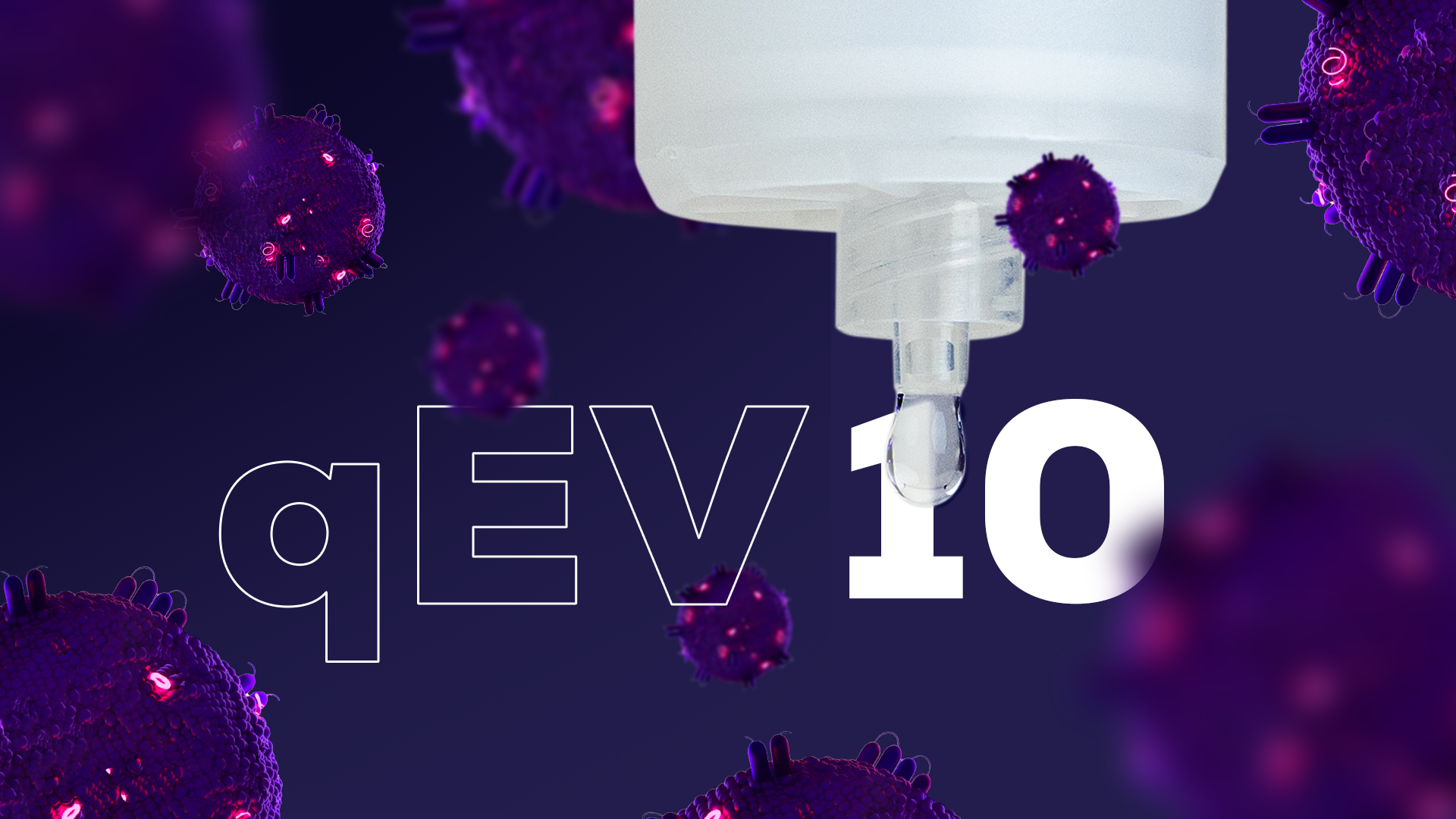Profiling EVs in relation to three different regulated cell death modalities
Historically, the role of EVs in cell death was overlooked, as EVs were thought to simply be cell debris. Due to the revelation of EVs and their roles in intercellular communication and immune regulation, Cappe et al. (2023) looked to EVs to determine their involvement in regulated cell death, using qEV10/70 nm columns to purify EVs.1
Cells from the same cell line (L929, a cell line commonly used in cell death studies due to the sensitivity of cells to cytotoxic effects) were exposed to three different conditions to undergo either apoptosis, necroptosis, or ferroptosis. EVs released from treated cells were referred to as cell death EVs (cdEVs), while control cells were not treated, enabling the production of steady-state EVs (ssEVs).
The authors reported that regulated cell death increased the protein contents of the cdEVs, when compared with ssEVs, with the increase primarily seen in RNA-related proteins. Additionally, different yet distinct rRNA methylation patterns were noted when compared with ssEVs. This study provides insights into the importance of RNA regulation in regulated cell death, which may be moderated by EVs.
Make womb! Placenta-derived EVs are the promising new osteoarthritis therapeutic candidate
Osteoarthritis (OA) is a chronic disease characterised by joint inflammation, damage, and pain. A recent study by Huang et al. (2023) supports an exciting new OA therapeutic candidate, originating from the placenta.2 As a mesenchymal stem cell (MSC)-rich organ, the placenta contains a uniquely high proportion of MSC-derived EVs. To investigate the effect of these EVs on OA disease models, placental-derived EVs (referred to in the study as exosomes, pExo) were isolated using qEV10/35 nm Legacy columns.
In cultured chondrocytes, pExo increased migration and proliferation of cultured chondrocytes in a dose-dependent manner, while suppressing inflammation. In rodent models of OA, pExo not only alleviated pain, but went as far as to restore damaged cartilage. Huang et al. (2023) propose that pExo mediated these effects – due to containing proteins that hold anti-inflammatory, anti-catabolic and mitogenic properties. The findings of this study suggest the potential for pExo as a disease-modifying agent for OA.
In search of a biocompatible drug delivery tool: the case for CDVs
EVs are promising drug delivery tools that, as native components, should be inherently biocompatible with a relatively low level of immune activation. However, current clinical applications are limited, partly due to the low production yield and rate. Therefore, there is interest in vesicles obtained by the mechanical extrusion of cells. In a study by Lau et al. (2023) they were investigated for their potential high yield and fast production rate, and were referred to as cell-derived vesicles (CDVs).3
EVs and CDVs from HEK293 cells were purified by qEV10 columns, characterised and compared to determine the bio-similarity between the two vesicle types. Importantly, membrane markers were investigated, due to their role in mediating intercellular communication, including targeting of cells and uptake. The group's findings reveal CDVs and EVs have display similar physical properties, including similar size distribution and morphology. The revelation of CDV-enriched membrane proteins provides a path forward for bioengineering and therapeutic endeavours.
Lung cancer patients’ urine may contain potential biomarkers
Lung cancer accounts for nearly 12% of all cancers, making it one of the most prevalent in the world. Crucially, few meaningful advancements have been made in the diagnosis and prognosis of lung cancer, with outcomes remaining poor. No doubt the difficulties surrounding diagnosis influence this outcome, with early-stage diagnoses exceedingly rare.
Exosomal proteins found in urine may be a potential biomarker and help make early diagnosis a reality. Jin et al. (2023) compared EVs (isolated with qEV10/35 nm) present in lung cancer patients' urine with that of healthy individuals.4 The group identified 12 lymphocyte migration regulation related proteins identified, 5 of which were migration related. Specifically, proteins including WASL, STK10 and WNK1, show promise as lung cancer biomarkers.
EVs found to be involved in signaling cancer-inducing changes in fibroblasts
Cutaneous squamous cell carcinoma (cSCC) is a non-melanoma skin cancer with an increasing incidence rate. EVs released by cSCC and the non-cancerous normal human epidermal keratinocytes (NHEK) were isolated using qEV10/35 nm columns, before undergoing further analyses.
Li et al. (2023) found that cSCC-derived EVs are secreted at a higher rate than in NHEK.5 Additionally, preventing the release of EVs from cSCCs was shown to inhibit tumour growth in xenografted human tissue in vivo. cSSC-derived EVs may mediate cancer-inducing changes in fibroblasts by converting them to cancer-associated fibroblasts (CAFs). CAFs comprise many tumour bodies and are thought to be involved in cancer development and progression. Therefore, understanding the involvement of cSCC-EVs in this process is critical for treatment development.
Looking for more qEV10 research highlights? Find them here or browse the store to learn more about the qEV10.









